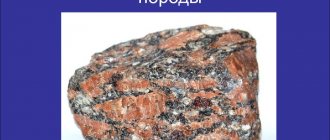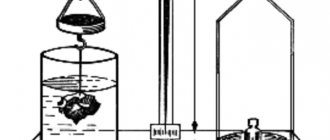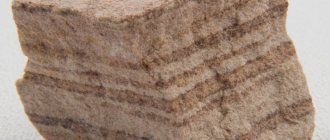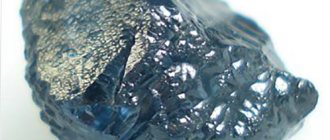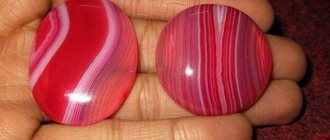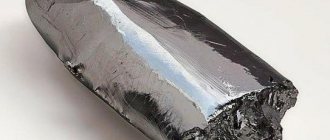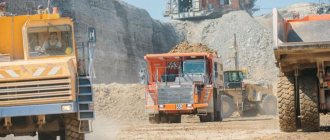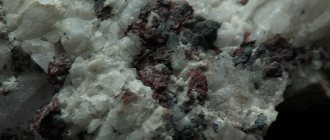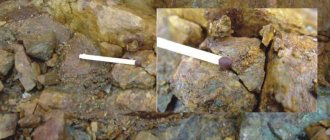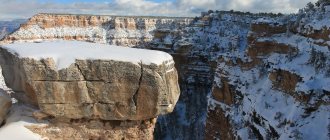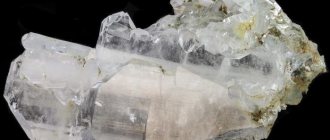Plagioclases
Plagioclases are the most common rock-forming minerals. They are a mixture of anorthite and albite. There are many varieties of plagioclase. As the proportion of anorthite increases, the basicity of the mineral increases.
Plagioclases are unstable to chemical weathering, which causes them to become clay compounds. In this feature they are similar to feldspars. They can be used as facing and decorative material. Almost every rock-forming mineral of the plagioclase group is found in the Urals or Ukraine.
Nepheline
Nepheline belongs to the group of framework aluminosilicates. It is depleted in silica. Similar rock-forming minerals are found in igneous rocks, including nephelinites and nepheline syenites. They are easily weathered from the earth's surface and transformed into kaolinite, as well as secondary formations of sulfate or carbonate composition.
Together with apatites, nepheline rocks can form vast massifs that are very important for modern industry. They are used in the production of glass, cement, alumina, silica gel, soda, ultramarine, etc. These main rock-forming minerals are found on the Kola Peninsula in the Murmansk region.
OBTAINING AND PROCESSING OF NATURAL STONE MATERIALS
Natural stone materials and products are obtained from rocks by mechanical processing (crushing, sawing, splitting, etc.), after which the structure and properties of the original rock are almost completely preserved.
Medium and soft rocks (hardness 5-3) are mined using stone-cutting machines equipped with carbide disk or chain saws. Cutting blocks from such rocks is carried out using the in-line method (Fig. 2.6);
To cut blocks from medium-hard rocks, circular and chain saws equipped with diamond cutting attachments are also used. The productivity of such machines on medium-hard rocks is 4-5 times higher than the productivity of carbide tools. The blocks extracted from the quarry are transported to a stone processing plant, where they are sawed into slabs or shaped parts are made from them.
According to the manufacturing method, natural stone materials and products can be divided into sawn (wall stones and blocks, facing slabs and floor slabs) and chipped (edge stones, hewn stones, paving stones and paving blocks, etc.).
Based on the type of processing, natural stone materials can be divided into the following main types:
1) roughly processed stone materials (rubble and boulder stones, crushed stone, gravel and sand);
2) piece stone and blocks of regular shape (for laying walls, etc.);
3) slabs with differently treated surfaces (cladding for walls, finished floors, etc.);
4) profiled parts (steps, window sills, belts, platbands, column capitals, etc.);
5) products for road construction (edge stones, paving stones and paving blocks).
Using impact and abrasive processing, natural stone is given one or another texture - a different surface character.
Impact processing consists of chipping the surface of a stone using a stone-cutting tool with replaceable tips: for heaving, a wide chisel is used - a scarpel; chopping off irregularities is done with a knitting needle - a pointed chisel; for clean processing of the front surface, a bush hammer with a medium or fine notch is used.
Impact processing makes it possible to obtain the following textures (Fig. 2.7): rock with hillocks and depressions, as with natural rock splitting; corrugated with regular alternation of ridges and depressions up to 2 mm deep; grooved with parallel intermittent grooves 0.5-1 mm deep; point-rough with point depressions 0.5-2 mm.
Abrasive machining includes sawing, milling, grinding and polishing.
Blocks of marble, limestone and other rocks are cut using frame saws reinforced with carbide inserts or equipped with diamond cutters. Diamond cutters increase cutting speed by 5-10 times and reduce power consumption by 2-2.5 times compared to carborundum or hard alloy cutters. In addition, diamond cutters can significantly increase the yield of finished products. The cutting width is reduced by approximately 3 times, and the consumption of raw materials is reduced by 12-18%. Diamond cutters can be used to produce thin slabs 5-10 mm thick, so 40-45 m2 of slabs are obtained from 1 m3 of stone, which makes them low in cost; In addition, the cleanliness of the cutting surface is ensured.
To produce profiled products (steps, corbels, cornices, etc.), stone-processing plants use stone-milling and universal profiling machines.
They are ground and polished on grinding and polishing machines with rotating disks that move along the surface of the product (Fig. 2.8). Grinding using grain abrasives: corundum, carborundum or small dust-like diamonds, which increase the productivity of the equipment. After grinding, the stone has a smooth matte surface. To give the stone a shiny, smooth surface, it is polished with felt polishing discs using mastics and fine polishing powders made from metal oxides (chromium, tin, iron, etc.) or tin nitrate.
Abrasive processing creates textures:
- sawn - with thin strokes and grooves up to 2 mm deep;
— polished — uniformly rough with a relief depth of up to 0.5 mm;
- polished - smooth velvety-matte with a revealed stone pattern;
- mirror - smooth with a mirror shine.
Thermal treatment of rock is based on the impact of a high-temperature gas jet (as a result of burning gasoline in an air stream) on the surface of this rock. When processing stone with a fuel-air thermal breaker, it heats up unevenly and the resulting thermal stresses cause chipping of the top layer. Using heat treatment, you can melt the surface layer of the stone, thereby obtaining a kind of “glazed” texture, in addition, changing the natural color of the rock.
Amphiboles and pyroxenes
Amphiboles, or band silicates, include hornblende, which is an important rock-forming component in metamorphic and igneous rocks. Its distinctive features are great strength and high viscosity. Most often, hornblende is found in the Urals.
Augite is a rock-forming mineral of pyroxenes. It is the most important component of igneous rocks. The color of augite can be very different (from black to green). This rock-forming mineral from the pyroxene group is part of basalt, andesite, diabase and some other rocks.
Mica
Some silicates have a layered, scaly or foliated structure. The most common such minerals are asbestos, talc, kaolinite, hydromicas, and micas (including muscovite and biotite).
What are their other features? Muscovite is a white mica found in metamorphic and igneous rocks. When weathered, it becomes a scattering. Muscovite is used as an electrical insulating material. It is also used in construction, where mica powder is a common filling material. Muscovite is mined in Eastern Siberia, the Urals and Ukraine.
Similar rock-forming minerals are biotites. This is magnesian and ferruginous mica of brown or black color. It is characteristic of metamorphic and igneous rocks. Biotite forms granular and scaly aggregates. It is considered a chemically unstable mineral. Biotite is found in Transbaikalia and the Urals.
Hydromicas
Another rock-forming minerals of rocks are hydromicas. Their characteristic feature is a small number of cations. In addition, hydromicas differ from micas by a noticeably higher content of water in their composition, which is reflected in their name. Their formation is facilitated by hydrothermal processes and rock weathering.
The most valuable hydromica is vermiculite, which is brown or golden in color. When heated, the molecular water of this mineral forms steam, which expands the interlayers in the crystal lattices, which increases its volume and density. Vermiculite is valuable due to its sound-absorbing and heat-insulating qualities.
Layered silicates
The minerals asbestos, talc, montmorillonite and kaolinite belong to the group of layered silicates. What makes them special? Talc is formed as a result of the interaction of hot solutions with aluminosilicates and magnesium silicates. It is used in powder form in the manufacture of plastics.
Like some other rock-forming minerals, asbestos is known in several varieties. It conducts electricity and heat poorly and is alkali-resistant and fire-resistant. Chrysotile asbestos has the greatest value. It is formed from carbonate and olivine rocks. In its long-fiber form, asbestos is used in the manufacture of some automobile parts and fireproof fabrics.
The most common mineral in clay rocks is kaolinite. It is formed as a result of weathering of micas and feldspars and is characterized by high stability. This mineral is white, grayish or brownish in color. Kaolin clays are used in the ceramics industry, where this raw material is used in the production of earthenware and porcelain ceramics. Due to the properties of their forming mineral, these materials are characterized by plasticity.
Montmorillonite is unusual in many ways. Its chemical composition is variable and depends on the properties of the atmosphere, including the water content in it. These main rock-forming minerals have a mobile crystal lattice, which is why they swell greatly when in contact with moisture.
Montmorillonite is formed in an alkaline environment due to the decomposition of tuffs and volcanic ash in water. It also appears in areas where igneous rocks have weathered and is resistant to chemical weathering. This mineral gives clay rocks additional adsorbability and swelling properties. Montmorillonite is used as an emulsifier, filler and brightener. Its deposits are located in Crimea, Transcarpathia and the Caucasus.
QUALITY CHARACTERISTICS OF BUILDING STONE
Density. Based on density, natural stones are divided into light and heavy. Light stones with a density of no more than. 1800 kg/m3 have a porous structure (volcanic tuff, pumice, limestone-shell rock) and therefore are used mainly in the form of piece stone and blocks for building walls and crushed stone for lightweight concrete. Heavy stones with a density of more than 1800 kg/m3 (from granite, syenite, diorite, etc.) serve as cladding and are used in the form of floor slabs, materials and products for hydraulic engineering and road construction.
Durability . Depending on the compressive strength of samples in an air-dry state, stone materials have the following grade values (MPa): 0.4; 0.7; 1; 1.5; 2.5; 3.5; 7.5; 10; 12.5; 15; 20; thirty; 40; 50; 60; 80; 100. Grades from 0.4 to 20 are characteristic of light stones of varying porosity.
Abrasion and wear depend on the hardness of the stone. These properties are important for road surfaces, floors, stair steps, etc. Therefore, hard fine- and medium-grained rocks that resist abrasion and wear should be used for road surfaces and floors.
Frost resistance. According to the number of cycles of alternating freezing and thawing of samples, under standard test conditions, natural stone materials are divided into grades according to frost resistance: Mrz 10, Mrz 15, Mrz 35, Mrz 100, Mrz 150, Mrz 200, Mrz 300, Mrz 400, Mrz 500.
Dense stones with a uniform grain structure have high frost resistance. Stones with an uneven porphyry structure crack faster with sudden changes in temperature due to different temperature coefficients of linear expansion of the fine-crystalline mass and large phenocrysts. The layered texture also reduces the frost resistance of the stone. Freshly mined limestones, dolomites, sandstones, tuffs are easily destroyed by frost due to the fact that their pores are filled with “mountain moisture” and the coefficient of pore saturation with water is close to 1. After natural drying, they become quite frost-resistant and more durable.
Water resistance. The softening coefficient of stone used for hydraulic structures and foundations must be at least 0.8; for external walls of buildings not less than 0.6.
Thermal conductivity is a necessary characteristic of light rock used in the form of large blocks and stones for the external walls of buildings. This indicator depends on the density of the rock, which is an indirect characteristic of porosity (see §.2* Chapter 1) - The thermal conductivity of limestone-shell rock and volcanic tuff in an air-dry state is 0.5-0.8 W/ /(k -°C).
Fire resistance depends on the mineral composition and structure of the stone. Some rocks decompose at elevated temperatures (gypsum at 100°C, limestone at 900°C), others (granite, quartz porphyry) crack already at a temperature of 600°C due to different thermal expansion of their constituent minerals and the polymorphic transformation of quartz.
Quartz
Mineral oxides are compounds of metals and oxygen. The most common representative of this group is quartz. This mineral is formed as a result of magmatic processes occurring in the deep interior of the earth. It occurs in three variations: as cristobalite, tridymite and a-quartz. The last of these modifications has been studied better than the others.
Quartz is one of the rock-forming minerals of igneous rocks (as well as sedimentary and metamorphic). It is chemically resistant. Quartz accumulates to form thick sedimentary deposits, sands and sandstones. The mineral is used in the ceramic and glass industries. As a natural stone (sandstone and quartzite), it is popular as a structural and facing building material. It is also used in the manufacture of chemical glassware, optical instruments, etc.
TYPES OF NATURAL STONE MATERIALS AND THEIR APPLICATIONS
Rough stone materials
Rubble stone (rubble) - pieces of irregularly shaped stone measuring no more than 50 cm in greatest dimension. Rubble stone can be torn (irregularly shaped) and bedded. The development of torn rubble and crushed stone is carried out mainly by explosive methods. Flagstone rubble is obtained from bedded rocks. Large pieces of such rock, limited by cracks, are separated with an excavator, followed by breaking the pieces to the required size using a stone splitting tool. Local sedimentary and igneous rocks are developed to meet the design requirements for strength, frost resistance and water resistance. Rubble made of sedimentary rocks (limestones, dolomites, sandstones) should not contain admixtures of clay, loose rocks and pyrite inclusions.
Dams and other hydraulic structures are built from rubble; it is used for retaining walls, laying foundations and processed into crushed stone.
Crushed stone - pieces of stone measuring 5-70 mm (for hydraulic engineering up to 150 mm). It is obtained by crushing stone from durable and frost-resistant rocks. To bring crushed stone to the required grain composition, its crushing is carried out in several stages. There is also natural crushed stone called gruss.
Gravel consists of rounded grains of the same size as crushed stone grains. It is obtained by sifting loose sedimentary rocks; if necessary, washing is used to remove harmful impurities (clay, dust).
Sand consists of grains of various minerals (quartz, feldspar, mica, etc.) measuring 0.14-5 mm. Natural and artificial (crushed) sands are used.
As indicated, crushed stone, gravel, and sand are used as aggregates for concrete.
Blocks and stones
Blocks of natural stone with a volume of more than 0.1 m* are cut mechanically from solid rocks (tufa, limestone, dolomite, sandstone, etc.) or obtained by sawing blank blocks. The blocks are used for external and internal walls, as well as for foundations and basement walls. Based on their purpose, blocks are divided into types D, B, P:
D - large wall blocks for masonry for double-row cutting of walls of residential buildings and public buildings;
B - blocks for multi-row masonry of walls of residential, public and industrial buildings;
P - window sill blocks (Fig. 2.9). Wall blocks have the shape of a rectangular parallelepiped, their dimensions must correspond to the dimensions indicated in the table. 2.4.
Wall stones obtained from tuffs and limestones are used for laying external and internal walls and partitions. Main dimensions of wall stones: 390 x 190 x 188, 490 x 240 x 188, 390 x 190 x 288 mm. Each such stone replaces 8-12 bricks in the masonry (Fig. 2.1). Enlargement of stones reduces labor costs and allows the transition to industrial construction methods. Walls made of finely porous natural stone do not require external plaster or cladding.
For external walls, stones with a density of no more than 2300 kg/m3 are used; water absorption of the stone should be no more than 30%; frost resistance - no less than Mr3 15.
TABLE 2.4. BLOCK SIZES
| t,sh„„ | **«*.« | Width t. | Т°™ «? |
| d | 236, 252, 286, 302 | 82, 100 | 40, 50 |
| B | 38, 48, 98, 118, 128, 148, 158, 178, 198 | 82, 100 | .30, 40, 50 |
| P | 82, 118, 129, 140, 200 . | 30,-40 ‘ |
Stones and slabs for cladding
For cladding hydraulic structures, embankments, bridge abutments Stones for facing can be slab-shaped (15-25 cm thick) and thickened pyramidal (30 cm thick or more).
External cladding of buildings can be made from weather-resistant sedimentary rocks (limestones, dolomites, sandstones, tuffs), which are easier to process and more economical than granite rocks. For the internal cladding of public buildings and structures (for example, metro stations), slabs made from easily sawn rocks: marble, anhydrite, and gypsum are widely used.
Slabs for external cladding have a thickness of 4-10 cm. The technique of cutting stone using artificial diamonds makes it possible to obtain decorative plates of marble, granite, onyx, etc. for cladding buildings.
Special linings are used to protect against corrosion.
Base slabs, as well as parts of cornices, corbels and other protruding parts of buildings are made from resistant rocks. These products should not have hairline cracks; they should be shaped in such a way that water from rain and melting snow does not linger on them.
Plates for floors and steps of internal stairs must have high wear resistance and decorative properties that correspond to the interior architecture.
Stones for hydraulic structures
Natural stone materials are used in large quantities for the construction of dams, piers, jetties, piers, and locks. In a zone of variable water levels, the service conditions of the material are especially unfavorable: the stone experiences repeated freezing and thawing in a water-saturated state. The protective lining in this zone is made of dense igneous rocks, having a water absorption capacity of no more than 1%, a grade of strength not lower than SO-100 MPa and frost resistance of Mr3 150-Mr3 500, depending on the class of the structure, climatic and other operating conditions.
Materials for rockfill dams must also meet the relevant requirements. The internal parts of the outline can be made from stone obtained from sedimentary rocks of grades 60-80 MPa with a softening coefficient of at least 0.7-0.8. Stone materials are tested for the influence of substances dissolved in water (sea, ground, river, swamp).
Road stone materials
The side stones that separate the roadway from the sidewalk are made from dense igneous rocks (granite, diabase, etc.), which are characterized by high frost and wear resistance and strength. Side stones can be straight and curved, high (up to 40 cm) and low (up to 30 cm). These stones are used instead of concrete ones with an appropriate feasibility study.
Paving stones for paving roads have the shape of a block, slightly tapering downward. Paving stones are made using a mechanized method from homogeneous fine- and medium-grained rocks (diabase, etc.). The same rocks are used to make a block for mosaic pavement (close in shape to a cube) and a block for paving (in the form of a truncated pyramid).
Paving slabs are made from gneisses and similar layered rocks. They have the shape of a rectangular or square slab with a side from 20 to 80 cm with a flat front surface and a thickness of at least 4 cm and no more than 15 cm.
Acid-resistant stone products
Some igneous and metamorphic rocks are used for lining various installations and apparatuses exposed to acids, alkalis, salts and aggressive gases, as well as those exposed to high and sharply changing temperatures and pressures. Acid-resistant rocks are used for the production of hewn slabs, bricks, bars and shaped products, and in crushed and ground form they serve as fillers in acid-resistant concrete and fillers in acid-resistant cements.
In accordance with the intended purpose, the rocks used must meet certain requirements, namely: be acid-resistant, i.e. good resistance to the effects of various acids and other reagents - this property is assessed by the solubility of the rock powder in solutions of acids (hydrochloric, sulfuric) when heated; have high fire resistance; have sufficient resistance to compression and bending; withstand sudden temperature fluctuations;
Of the igneous rocks, acid-resistant are mainly acidic fine-crystalline rocks, which include beshtaunite, andesite, granite and some tuffs, and of metamorphic rocks - quartzite.
The use of acid-resistant piece stone is limited by its high cost, due to the difficulty of mining and processing, as well as the low yield of finished products from the rock mass. A complete substitute for stone is much cheaper acid-resistant concrete. Artificial cast stone (basalt, diabase) also competes with piece cut stone.
Carbonates
Another group of rock-forming minerals is carbonates. They are widespread salts of carbonic acid. Carbonates are characteristic of metamorphic and sedimentary rocks. The most common types are magnesite, calcite and sodium. They all have their own individual properties.
Calcite has low solubility in water. When exposed to carbon dioxide, it can turn into bicarbonate. This product will dissolve in water a hundred times faster than regular calcite. This mineral is found in crystalline aggregates, sagging and thick deposits of marble and limestone. Calcite can form from the accumulation of silt. Another reason for its occurrence is the deposition of lime carbonate in water. Deposits are found in the Urals, Ukraine and Kaleria.
Magnesite is similar to calcite in shape and structure, but is much less common in nature. The reason is in the factors of its formation. Magnesite is formed as a result of weathering of serpentinites, as well as the interaction of magnesian solutions and limestones.
Sodium is a white or colorless mineral found in the form of granular and dense masses. When heated, it dissolves. Sodium is formed in sodium salt lakes when there is an excess of dissolved carbon dioxide in them. This mineral is used in metallurgy and glass making.
§ 3. Sedimentary rocks
Processes at origin and classification
Primary rocks located on the earth's surface, undergoing weathering, i.e. destruction under the influence of various atmospheric factors (air, water, temperature changes, plant and animal organisms, etc.) gradually turn into loose products of destruction, which are partly blown by the wind and ice, mainly water, are carried to lower places, closed water basins, seas and oceans, where they are deposited. The rocks produced in this way are called secondary or sedimentary. Water can transport destruction products in two ways: 1) mechanically - small particles in suspension, and large ones - rolling along the bottom; 2) in the form of an aqueous solution, since some products are formed in a water-soluble state. Depending on this, the formation of sediment can be either as a result of mechanical precipitation of particles from the flow, in the case of, for example, a strong slowdown in the flow of a river, or as a result of the release of a soluble substance into sediment, in the case of, for example, evaporation of water, or chemical reactions, in as a result of which insoluble compounds are formed. In addition, the formation of sediment occurs as a result of the vital activity of lower animals or plant organisms. Therefore, sedimentary rocks are divided into mechanical sediments or clastic rocks, physicochemical sediments and organogenic rocks (Fig. 4). Loose mechanical sediments (clay, sand, gravel, crushed stone) over time can be impregnated with some natural binder and cemented into a continuous monolithic mass. Cemented rocks include, for example, sandstone (cemented sand), conglomerate (cemented gravel), breccia (cemented crushed stone). Organogenic rocks, in turn, are divided into two groups. If they occurred as a result of the vital activity of animal organisms, they are called zoogenic, if plant - phytogenic. The former include limestone-shell rock, the latter - diatomite, tripolite, opoka. Diatomite was formed from accumulations of shells of microscopic algae - diatoms, consisting primarily of amorphous silica. Tripel is a rock secondary to diatomite, consisting of tiny grains of opal (a type of amorphous silica), round in shape. The flask is a product of compaction of diatomites and tripoli.
Mineralogical composition of sedimentary rocks
In sedimentary rocks, such as mechanical sediments, all the minerals of the primary rocks can be found. However, sedimentary rocks also have their own unique minerals. While in igneous rocks salts of weak acids (silicic and aluminosilicon) predominate, in sedimentary rocks silicates and aluminosilicates play a subordinate role, giving first place to salts of strong acids: carbonic, sulfuric, etc.
Of the minerals inherent only to sedimentary rocks, the following are of greatest importance: calcite, magnesite, dolomite, gypsum and kaolinite (Table 3).
Calcite (lime spar). The chemical composition of calcite is expressed by the formula CaCO3. It is found in limestones and marbles both in the form of perfectly formed crystals and in the form of a continuous mass of various compositions, granular or dense. Pure calcite is colorless, but in the presence of impurities it can be grayish, or white, or colored in light shades of blue, yellow, brown and other colors. The hardness of calcite is 3, it is characterized by very perfect cleavage in three directions.
Calcite is recognized by its reaction with hydrochloric acid, with which it reacts well even in the cold, releasing carbon dioxide with characteristic boiling. The solubility of calcite in ordinary water is negligible, but it dissolves well in water containing CO2. The latter circumstance must be taken into account when using building stone from rocks rich in CaCO3.
Magnesite and dolomite. In nature, magnesium carbonate is found in the form of the mineral magnesite (MgCO3) in the rock of the same name. As a natural building stone, magnesite is of no importance; it is mainly used for the manufacture of fire-resistant products and for the preparation of a binder - caustic magnesite.
Dolomite is a double salt of calcium and magnesium carbonates in chemical composition; its formula is: CaCO3 MgCO3. It is found both in crystalline form and in the form of granular and, less commonly, earthy masses in the rock of the same name. It is used, like magnesite, in the production of refractories and for the production of a binder - caustic dolomite.
The hardness of magnesite and dolomite is approximately the same, 3.5-4. They are distinguished by the action of hydrochloric acid. Magnesite does not react with hydrochloric acid under any conditions, and dolomite reacts, but poorly; When heated, it releases CO2. In rocks, calcite and dolomite accompany each other in various proportions.
Gypsum and anhydrite. Natural gypsum is an aqueous calcium sulfate salt CaSO4 ·2H2O. In addition to gypsum, there is an anhydrous salt - CaSO4, called anhydrite. Neither one nor the other, like natural stones, is used in construction. Gypsum can sometimes be a cementitious substance in sandstones. The main use of gypsum and anhydrite is to produce gypsum binders.
Kaolinite. Kaolinite (Al2O3 2SiO2 2H2O) is formed during the weathering of feldspars and is the main component of many clays. Pure kaolinite is white, earthy in appearance, slightly greasy to the touch and crumbles easily. Hardness 1.
Hydrous silica. The mineral composition SiO2 in sedimentary rocks, unlike igneous rocks, is present not only in a crystalline state (in the form of quartz), but also in an amorphous form, often in combination with water (SiO2 nH2O); An example is opal, which contains up to several percent water. Aqueous amorphous silica composes such sedimentary rocks as diatomite and tripoli, and is also a very strong natural cementitious substance, filling the spaces between grains of sand (in sandstones) and calcite (in limestones).
Structure of sedimentary rocks
The following types of structures are of utmost importance.
- Granular-crystalline (marble-like), when the rock consists of crystalline grains that are clearly visible to the naked eye or under a microscope. Depending on the average diameter of the grains that make up the rock, they are distinguished: fine (0.25-0.75 mm), medium (0.75-1.25 mm), coarse (1.25-2 mm) and coarse-grained structure ( 2-3 mm).
- Dense (aka fine-grained), when the grains are difficult to distinguish from each other even under a microscope. Conventionally, rocks with a granular-crystalline structure with a grain size of less than 0.25 mm are considered dense.
- Oolitic, when the rock consists of round balls of radial-concentric composition, cemented by one or another natural cementing substance. It is found in limestones, in this case called oolitic.
- Clastic (clastic), when the rock consists of fragments of minerals or rocks cemented by one or another natural cement. Sandstones, conglomerates and breccias have this structure.
- Foamy or tuff - the structure of porous rocks and others.
Loose clastic rocks
Depending on the particle size, the following loose rocks are conventionally distinguished: clay (<0.005 mm), dust (0.005-0.05 mm), sand (0.05-5 mm), crushed stone and gravel (>5 mm), cobblestones and boulders (large stones).
| Clay is a powdery, finely dispersed rock composed of so-called clay-forming minerals: kaolinite, montmorillonite (Al2O3 4SiO2 nH2O), hydromicas and some others, which consist of individual very fine particles (<1 µm), plate-shaped, interconnected by molecular forces attraction. |
Clays are formed as a result of weathering of rocks rich in feldspars (granite, syenite, gneiss, porphyry, etc.) (See also § 2, chapter 6).
Sand . Sands can be quartz, feldspathic, calcareous, dolomite, etc.
River sand, sea sand and lake sand are characterized by a rounded grain shape and a well-ground surface. Mountain and ravine sands have an angular shape and a rough grain surface.
Large quantities of sand are used for the preparation of mortars and concrete, in road construction for the construction of road foundations and the preparation of asphalt concrete. Huge quantities of sand are consumed by railway construction. Pure quartz (without impurities) sands are highly valued and used as raw materials in the glass, ceramic and metallurgical industries.
| Gravel and crushed stone. Crushed stone is a primary rock in relation to gravel; it is formed directly from the parent rock during its destruction and therefore consists of fragments that have an angular, sharp-edged, unrounded shape. Gravel is formed from crushed stone in river beds, along the shores of seas and lakes. The gravel particles have a rounded shape and a smooth surface. |
Gravel and crushed stone are used in road construction, as ballast for railways and as aggregate for concrete.
| Boulders (cobblestones). In construction practice, boulders are commonly referred to as rock fragments of glacial origin that are larger in size than gravel. |
Boulders are used in concrete and road construction to produce crushed stone. Cobblestone has long been used for paving streets. The largest boulders can be used as piece stone for buildings.
Opal
Opal is a widespread amorphous hydrated silica. It does not decompose in acids, but is soluble in alkalis. There are several conditions for its formation. This mineral appears due to precipitation from geysers and hot solutions, as well as weathering of igneous rocks. In addition, it is formed due to the accumulation of waste products of organisms living in the sea. Opals are a popular material among jewelers.
Sulfates and sulfides
Sulfate minerals are salts of sulfuric acid that form on the earth's surface. Most compounds of this group are not stable enough in the planet's crust. Sulfates such as gypsum, mirabilite and barite are used for construction purposes. Anhydrite is a solid granular mass. It is a crystalline mineral with a characteristic whitish-blue color.
When in contact with water, anhydrite increases in volume and becomes gypsum, forming impressive accumulations of rocks. This sulfate is a typical chemical precipitate formed when seas dry out. Gypsum and anhydrite are used as binders.
Heavy spar or barite are crystals with a specific tabular shape. It does not transmit X-rays well, which is why it is used in the production of special concrete. Barite is formed as a result of precipitation from hot aqueous solutions.
Sulfides are compounds of sulfur with other elements. Cinnabar belongs to this class. This mineral is associated with young volcanoes. In nature, cinnabar occurs in the form of veins and strata deposits. It accumulates in the form of placers due to its own stability on the earth's surface. Cinnabar is used in the synthesis of mercury and the manufacture of paints.
GENERAL INFORMATION
Rocks are the main source of building materials. Rocks are used in the building materials industry as raw materials for the manufacture of ceramics, glass, thermal insulation and other products, as well as for the production of inorganic binders - cement, lime and gypsum. Hundreds of millions of cubic meters of sand, gravel and crushed stone are used annually as concrete and mortar aggregates. Natural stone materials are widely used for cladding buildings and structures, constructing floors, stairs, and paving roads.
Rocks are natural formations of more or less definite composition and structure that form independent geological bodies in the earth's crust.
Minerals are the constituent parts of a rock that are homogeneous in chemical composition and physical properties. Most minerals are solids, but sometimes they are liquid (native mercury).
Depending on the conditions of formation, rocks are divided into three genetic groups:
- igneous rocks formed as a result of cooling and solidification of magma;
— sedimentary rocks that arose in the surface layers of the earth’s crust from the products of weathering and destruction of various rocks;
- metamorphic rocks, which are the product of recrystallization and adaptation of rocks to the physicochemical conditions that have changed in the earth's crust.
